#Bach Orchestral Suite
Text
youtube
J.S. Bach - Orchestral Suite no.3 in D Major, BWV 1068 (c.1730)
I want to say I was listening to this one in my rocking chair next to my books on music. Or with wine and cheese at someone's party. No, I put this on while I washed the dishes. I thought I'd share my old post on this same piece but realized that I'd never written about this suite. And I don't have anything profound or introspective to say about it. It made taking down this mountain if dirty dishes feel like a grand accomplishment. It's a reminder that this music was written for the audience to enjoy. It doesn't have to be treated like music theory homework. That being said, I do like looking at the history of the orchestral suite, which would develop into the symphony. What can we hear from Bach's Proto-Symphony no.3? The Orchestral Suite was a carryover from France's Ouvertures. It would start with a slow section to draw in the audience, and then a lively counterpunctual exercise. After the "heavier" opening movement, the rest of the pieces are light dances, galanteries (minuets, bourrées, courantes, sarabandes, gavottes, allemandes, gigues, etc.). Because the German political elite had a taste for French art, they would have music played during their banquets and parties. Bach had no real interest in this kind of music (which would be a decent income source) because he was already dedicated to writing church music. But what few he did leave behind (we only have four Orchestral Suites attributed to him) sounds like great party music. The Suite in D Major is scored for 3 trumpets, timpani, oboes, violins, viola, basso continuo, giving it a louder sound than the others. The Ouverture starts with the slower grand statement announced by the trumpets and timpani. As you'd expect from Bach, this opens into a counterpunctual explorations of the melodies that developed out of the opening, but with the vibrancy of Vivaldi's fast paced concertos. The ending section cuts back and ends with a more subdued coda. The Air of this suite has stuck in our culture through films and TV, popular for its beautiful melodies. I remember first hearing it in the most ironic example I know; played during the library scene in Seven (or "Se7en") from the 1995 film. The ugliness and depraved misanthropy in the film is contrasted for a moment by the idealized "beautiful music" by an idealized "Great Composer". I thought it was showing the spectrum of human minds, that the "greatest" Baroque composer comes from the same human family as a lunatic serial killer using the Christian "Seven Deadly Sins" for gruesome punishments against his victims. Listening to it now I think it's fascinating that someone could have been touched or moved by the gorgeous Aria without words Bach wrote for whatever party or occasion, and she would have no idea that the same music would be heard again as so many of these festival pieces were back then. The latter dances show off the trumpets to make each one boisterous and lively. Two Gavottes with heavy emphasis on the beat, an upbeat Bourrée, and ending on the always fun and swaying Gigue. Of these dances I think I love Bach's gigues the most because they're always densely woven with his long waves of counterpoint across each instrument to create a dance that makes me think of old pub drinking songs or sailors dancing and drinking at sea. Another reminder that this music is supposed to be fun and enjoyable for anyone, and you can turn your own living room into an 18th century court for fun.
Movements:
Ouverture
Air
Gavotte I/II
Bourrée
Gigue
#Bach#J.S. Bach#Johann Sebastian Bach#Orchestra#Orchestral Suite#suite#music#classical#baroque#orchestra music#classical music#baroque music#Bach Orchestral Suite#French Ouverture#Air on the G string#Air#Bourree#Gigue#Gavotte#Youtube
19 notes
·
View notes
Text
Johann Sebastian Bach (1685-1750) - Orchestral Suite No. 1 for 2 Oboes, Bassoon, Strings and Basso continuo in C-Major, BWV 1066, I. Ouverture. Performed by Siegbert Rampe/Nova Stravaganza on period instruments.
#johann sebastian bach#baroque#classical music#orchestra#bassoon#oboe#period performance#period instruments#orchestral suite#suite#baroque music#woodwinds#strings#string orchestra#band#bach#overture#ouverture
36 notes
·
View notes
Text
youtube
a very soothing video from my biology lecture
(audio not necessary, but it enhances the experience)
#cytoplasmic streaming#bach#Bach's Orchestral Suite (Ouverture) No. 3 in D Major#biology#hw lb#gillianthecat goes back to school#Youtube
1 note
·
View note
Photo
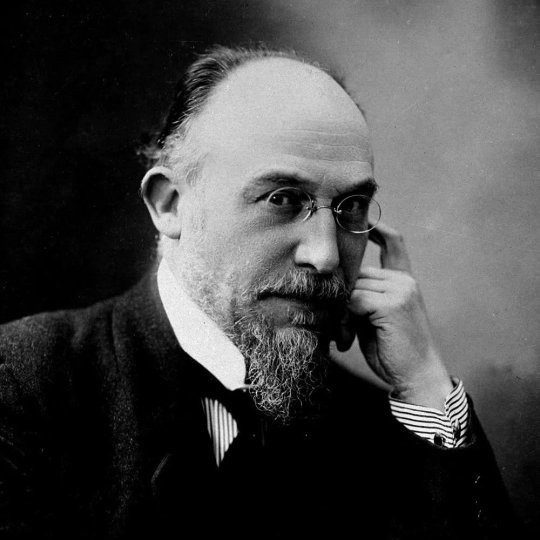
I am by far your superior, but my notorious modesty prevents me from saying so.
- Erik Satie
To his contemporaries and peers Erik Satie was something of an enigma. Just a few of his quirks included claiming he only ate white foods, carrying a hammer wherever he went, founding his own religion, eating 150 oysters in one sitting, and writing a piece with the instruction to repeat 840 times! As a composer, Satie paved the way for the avant-garde in music and became a very influential figure in the classical music of the 20th century whose works still sound fresh today.
Born into a poor and difficult childhood in the Normandy harbour town of Honfleur on 17 May 1866, Satie would always be an outsider. The Paris Conservatoire to which he was enrolled by his stepmother, herself a pianist, became for him “a sort of local penitentiary” during his teens; he left with no qualifications and a reputation for being lazy. He signed up for military service in 1886 and dropped out within the same year. Immersing himself in the bohemian life of Montmartre, he became linked with the popular music scene and eked out a living as an accompanist, playing at the Chat Noir cabaret. Always on the periphery, and forever out of money, he later downgraded from the cramped room in which he lived to the less fashionable Parisian suburb of Arcueil, where he holed up in isolation and squalor – no visitors set foot in the room during the near-30 years he lived there.
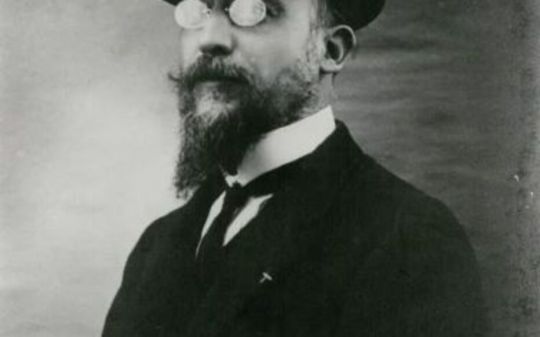
Much has been made of the eccentricities of this flâneur, who was always seen in a grey velvet suit, and yet underlying Satie’s music is his serious desire to create something new. You can hear it in his popular piano pieces: the haunting scales and rhythms of the Trois Gnossiennes written under the spell of Romanian folk music, and the meditative world of Gymnopédies, where, as in a cubist painting, motifs are “seen” from all sides. At a time when French composers were looking to escape the shadows of Wagner’s epic Romanticism, the French composer’s stripped-back mechanical sound, inspired by the humble barrel organ, offered a radically simple approach.
Satie preferred originality to the mundane. The composer of the famous Gymnopedies, could never be accused of having an uninteresting personality. For one, his outgoing fashion statements always caused a stir. During his Montmartre years, he had 12 identical velvet corduroy suits hanging in his wardrobe, which earned him the nickname ‘The Velvet Gentleman’, and in his socialist years, he donned a bowler hat and carried an umbrella.

Debussy helped to draw public attention to Satie, orchestrating two of his Gymnopédies, yet Satie had to wait until much later in life to attain celebrity status. While still earning a living writing salon dances and popular cabaret songs, and after suffering a creative crisis, he enrolled himself at the Schola Cantorum in Paris at the age of 39. Rather than finding him validation, his studies seem to have fuelled his hatred of convention - it’s with more than a hint of bitterness that he claims to put “everything I know about Boredom” into the Bach chorale of his masterful Sports et Divertissements piano pieces. But notoriety led to a succès de scandale and when it came it came with a bang in Parade, his surreal, one-act circus ballet for Diaghilev. Into the orchestral score, which featured jazz and cabaret tunes, were thrown typewriters, sirens and a pistol - just the kind of noises a wartime audience would normally pay not to hear. With its rigid cubist costumes by Picasso - which restricted Massine’s choreography - and a promotional push from Cocteau, it was provocative enough to secure Satie’s position at the vanguard of modernism.
Yet Satie was continually frustrated in his attempts to be accepted as an artist in high society France - his failure to establish himself at the prestigious Académie des Beaux-Arts, to which Debussy had won a scholarship, only compounded his resentment. Was this treatment by the cultural elite fair? Certainly his determination to antagonise his audience in his late ballets did little to endear him to the critics, but the fierce criticism he received in Paris was also a sign of things to come. Pierre Boulez would later poke fun at Satie’s lack of craft, while composer Jean Barraqué - another proponent of 12-tone music - would deride Satie as “an accomplished musical illiterate … who found that his friendship with Debussy was an unhoped-for opportunity to loiter in the corridors of history”.
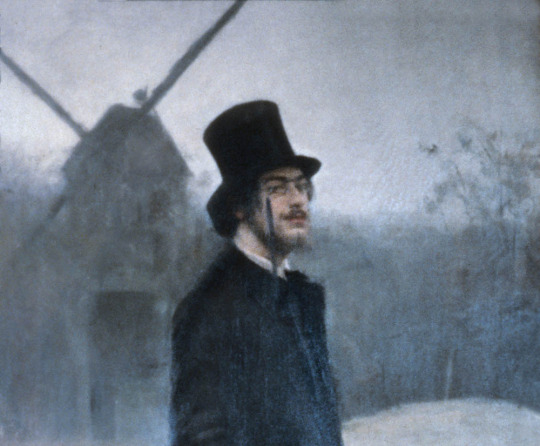
Satie is perhaps, to this day, the most audacious and original composer when it comes to naming his works e.g. Gnossiennes and Gymnopédies. With Satie you will not see symphonies, concertos or opus numbers. Satie possessed a wicked sense of humour and his mockery, both of himself and others, became an inspiration for many of his irony-tinged works. His Sonatine bureaucratique is a spoof of Muzio Clementi’s Sonatina Op. 36 and contained many witticisms in the score. For example, he writes Vivache (vache being French for cow) instead of the original Italian tempo marking Vivace.
Whether in the collage-like miniature piano parodies he wrote during the World War I, his creation of a theatre format that has endured over the years, or in his collaboration with Jean Cocteau, Pablo Picasso y Sergei Diaghilev, there is a liveliness of imagination and a hunger for innovation that made Erik Satie In the torch bearer of the vanguard in his work. Satie would influence so many so strongly that years later some of his closest friends became radical artists, for example. ManRay, the sculptor Constantin Brâncusi, and Marcel Duchamp, or a much younger group of Paris-based composers like Les Six.
Satie, a known drinker of absinthe, and apparently every other alcohol available, died of cirrhosis at the age of 59 in Arcueil, France in July 1925. But his compositions, especially those deceptively simple-sounding solo piano works, find life today through recitals, concerts, and great movie scores. Although he died in poverty with little success to his name, today Erik Satie is acknowledged as a founder of 20th-century modernism, who changed the face of music.
Personally I do find Satie's music enriching, But I also find that his calculated wackiness is culturally apt. Pieces like ‘3 Pieces in the Shape of a Pear’, ‘Flabby Preludes for a Dog’ and ‘Desiccated Embryos’ rewardingly deflate Wagnerism's excesses in a characteristically French way.
#satie#erik satie#quote#music#classical music#composer#pianist#debussy#modernism#paris#french#france#arts#culture#french culture#innovation#artist#life
162 notes
·
View notes
Text
See this man?

His name is Piero Angela.
Some say he's the italian David Attemborough.
I say David Attemborough is the british Piero Angela.
He's a journalist. Tv host. Science journalist. Jazz pianist.
He was born in Turin in 1928 and, it is worth noting, his father Carlo has been awarded the Medal of the "Righteous among the Nations".
Last year Piero Angela celebrated 70 years (don't know if you heard me right: 70 YEARS!!) of non-stop collaboration with italian national TV and radio broadcaster RAI. Hell, when he started working for RAI it was still a radio only broadcaster... tv didn't even exist in Italy yet.
He's been anchorman, reporter, war correspondent... but what's most famous for is QUARK.

The scientific TV program that turned the air of Bach's Orchestral Suite no. 3 in D major into "The Quark Music"! That's right. No one in Italy knows what's the air of Bach's suite n.3 in D major is, but goddammit, everyone knows the "Quark Music"!
That's because the man himself, the program and its intro are such a huge part in the life of every italian, even of those who are not interested in science. Piero Angela and his angelic intro are one of the pillars of italian modern culture!
Proof to that, another pillar of italian culture, Topolino, celebrated Angela's 90th birthday in 2018 with a story, an interview and a very cool cover! Here's to you Peter Quarky:
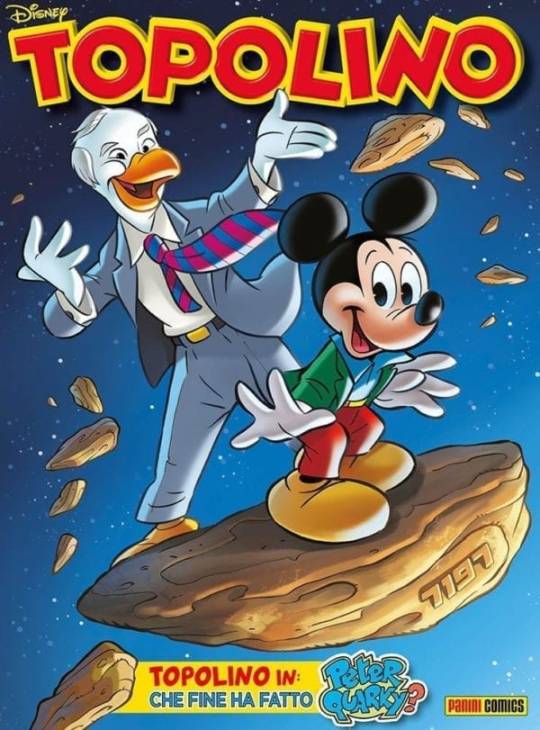
Why am I telling you all this?
Because Piero Angela passed away today, aged 93. But not before having written a really touching letter (like a boss!) thanking everyone who worked with him and all the common people who let him bring knowledge and science into their home with his very savoy care and kindness.
Right now for me is like loosing a very dear member of the family... you know, an odd granpa fixated with dinosaurs, planets and bacteria (I've still the complete collection of vhs he made on the dinosaurs and the one on the solar system) and I just wanted everyone to know about him, his impressive career and simply what a cool and kind person he was. A gentleman of old days.
To the stars, Piero... to the stars!
Piero Angela plays "As time goes by" in the program "Che Tempo Che Fa" in 2018.
#piero angela#bye bye piero#see you on the other side#quark#super quark#rai#science journalism#science#topolino magazine#mickey mouse#italian tv#italian celebs#johann sebastian bach#bach suite n.3 in D major#jazz#jazz pianist#as time goes by
674 notes
·
View notes
Text
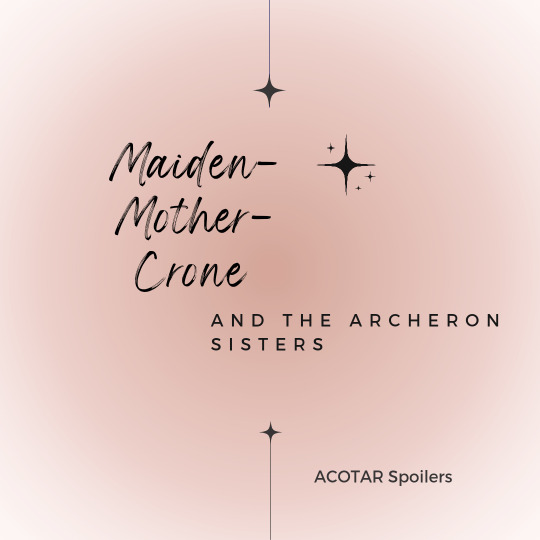



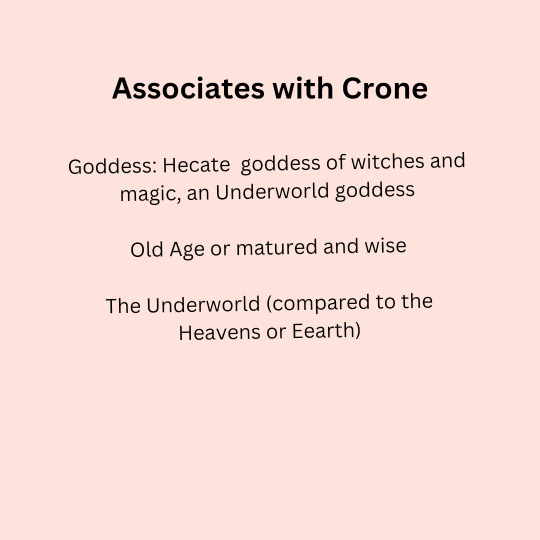
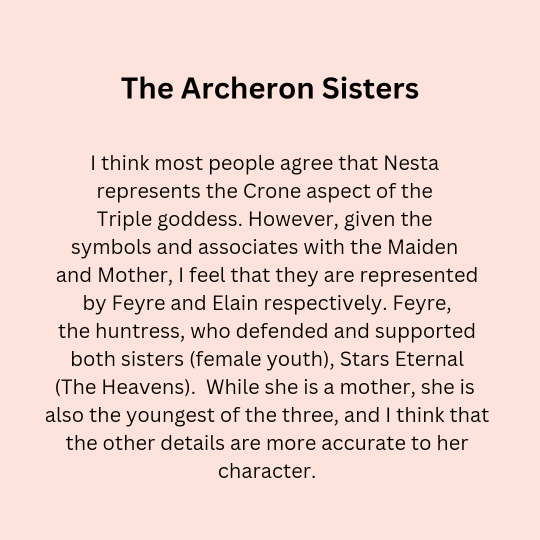

#nesta#nesta archeron#acosf#cassian and nesta#nessian#nesta x cassian#acotar#feyre archeron#rhysand#cassian#elain acotar#elain archeron#archeron sisters#Spotify
26 notes
·
View notes
Note
Hi Yena! How are you?? Can I have some orchestral music recs please? I've been wanting to get listen to more classic music, but I have no idea where to start. I hope your exams (and revision!) goes well!!
hi oh my god!!!!!! id love to give you orchestral recs!!!!!! it really depends on ur music taste tbh but classical music is sooo so versatile so im gonna go thru a list of semi popular pieces and just give a few words-vibe explanation of them too
Rachmaninoff Symphony No. 2 - 20th cent dramatic romance movie soundtrack (specifically focused in the 3rd mvt)
Tchaikovsky Nutcracker Suite - exhilarating storytelling with dramatic climax
Bach Brandenburg Concerto No. 3 - the epitome of 18th century stuffy wigs and aristocratic balls
Mendelssohn Violin Concerto in E minor - the dark theme of the anti-hero in a vigilante/dystopian movie
Beethoven Spring Sonata - if the imagery of petals floating down a fast-flowing stream was fit into a melody
Elgar Salut d'Amor - cream silk and pink ribbons in pigtails
Beethoven Romance No. 2 - swiss royalty ballroom dancing music. specifically switzerland, for reasons unknown to my brain
Monti Czardas - if spanish yearning was a violin piece
Dvorak Serenade for Strings in E Major - imagine the colour dark yellow spinning around super fast amongst the falling autumn leaves
if anyone wants more orchestral music recs then I'm always happy to provide!!!!! just send in an ask w the vibes of music that you'll want and im do my best to find something 😎
#fairyhaos.answers#and. if anyone wants brief music theory lessons and wanys to know why im hesitatnt to use the umbrella term of classical music#for orchestral/ non pop music then do send jn an ask too 👍#completely-zoned-out
11 notes
·
View notes
Text
orchestral teeth/twl/nitsw/ /lom/goy/lonely heart
draft 2 of the first two movements is up <3
hope you enjoy!! there's a bit of layering of parts that may or may not clash in some places (don't mind the end of the first movement)
enjoy a lot of cello melody (bc luke's voice), unpolished danceableness, a bunch of key changes in teeth (because i'm trying to mimc 4 versions of that song in 2 different keys) and me trying to convince you ghost of you is on calm so that the violas get a solo in calum's verse :)
link to movement 3's first draft and older versions of these
inspired by (other than 5sos):
-the moldau by bedrich smetana
-little threepenny opera suite by weill
-wine, women and song by strauss
-viola concerto in g by telemann
-viola concerto in c minor by jc bach
no timestamps sorry. each movement blurs the 3 songs together you just gotta hear it through. anyway go listen to the inspo too if you feel like more classical music!
this is a demo made using musescore, not recorded with live instruments (yet)
#silver arranges 5sos#silver arranges calm#5sos#5 seconds of summer#calm#youngblood#teeth#thin white lies#not in the same way#lover of mine#lonely heart#ghost of you#luke hemmings#calum hood#michael clifford#ashton irwin
7 notes
·
View notes
Text
I am now no longer accepting submissions as I need time to set up the tournament to start on the 1st of December (first poll will be scheduled for midnight GMT that day). I will have a little more information about the tournament structure soon when I release the bracket. Thank you so much everyone for your submissions, the following 58 suites will be included:
Lincolnshire Posy (Percy Grainger)
First Suite in E-flat for Military Band (Gustav Holst)
Second Suite in F for Military Band (Gustav Holst)
The Planets (Gustav Holst)
The Firebird Suite (Igor Stravinsky)
English Folk Song Suite (Ralph Vaughan Williams)
Children’s Corner Suite (Claude Debussy)
Le tombeau de Couperin (Maurice Ravel)
Jazz Suite no. 2 (Dmitri Shostakovich)
Daphnis et Chloe Suite no. 2 (Maurice Ravel)
Peer Gynt Suite no. 1 (Edvard Grieg)
The Nutcracker Suite (Pyotr Ilyich Tchaikovsky)
The Carnival of the Animals (Camille Saint-Saens)
Cello Suite in G Major (Johann Sebastian Bach)
Lieutenant Kije Suite (Sergei Prokofiev)
Romeo and Juliet Suite No. 2 (Sergei Prokofiev)
Romeo and Juliet Suite No. 2 (Sergei Prokofiev)
Pictures at an Exhibition (Modest Mussorgsky orch. Maurice Ravel)
Capriccio Espagnol (Nikolai Rimsky-Korsakov)
Swan Lake Suite (Pyotr Ilyich Tchaikovsky)
Sleeping Beauty Suite (Pyotr Ilyich Tchaikovsky)
Giselle Ballet Suite (Adolphe Adams)
Masquerade Suite (Aram Khachaturian)
Orchestral Suite no. 3 in D (Johann Sebastian Bach)
Suites for Solo Viola, op.131d (Max Reger)
Dances Suite (Béla Bartók)
L’Arlésienne Suite no. 2 (Georges Bizet)
Appalachian Spring (Aaron Copland)
Der Rosenklavier Suite (Richard Strauss)
Suite Española no. 1 op. 47 (arr. for guitar) (Isaac Albéniz)
Carmen Suite no. 2 (Georges Bizet)
Papillons Suite (Robert Schumann)
Mother Goose Suite (Maurice Ravel)
Holberg Suite (Edvard Grieg)
Scheherezade (Nikolai Rimsky-Korsakov)
Má Vlast (Bedřich Smetana)
Magnificant in Bb Major (Francesco Durante)
Suite for Recorder and Strings (Gordon Jacob)
Symphonic Dances (Sergei Rachmaninoff)
Suite in Old Style (Nikolai Kapustin)
Livre de Guitarre dédie au roy, Suite no. 3 in D Minor (Robert de Viseé)
American Suite (Antonín Dvořák)
Caucasian Sketches Suite no. 1 (Mikhail Ippolitov-Ivanov)
Petrushka Suite (Igor Stravinsky)
Peter and the Wolf (Sergei Prokofiev)
A Time There Was… (Benjamin Britten)
Suite from Incidental Music from the Film “The Golden Mountains” (Dmitri Shostakovich)
Suite from Hamlet (Dmitri Shostakovich)
Violin Partita no. 2 (Johann Sebastian Bach)
Violin Partita no. 3 (Johann Sebastian Bach)
Keyboard Partita no. 2 (Johann Sebastian Bach)
Keyboard Partita no. 6 (Johann Sebastian Bach)
Dances in the Canebrakes (Florence Price)
Mountain Roads (David Maslanka)
A Moorside Suite (Gustav Holst)
Lemminkäinen Suite (Jean Sibelius)
Danish Folk Music Suite (Percy Grainger)
St Paul’s Suite (Gustav Holst)
This number does mean that some suites will have a bye in the first round, however the draw (including byes) will be drawn randomly to make it fair.
8 notes
·
View notes
Text
Wolf 359 Classical Music:
Episode 1: The Entertainer - Scott Joplin (1868-1917)
Episode 4: Chinese Blues - George Gershwin (1898-1937)
Episode 4: Also sprach Zarathustra, Op. 30: Prelude - Richard Strauss (1864-1949)
Episode 12: The Planets Op. 32: 4. Jupiter, the Bringer of Jollity - Gustav Holst (1874-1934)
Episode 12: The Planets Op. 32: 1. Mars, the Bringer of War - Gustav Holst (1874-1934)
Episode 13: The Planets: 7. Neptune, the Mystic - Gustav Holst (1874-1934)
Episode 14: The Italian Girl in Algiers: Overture - Gioachino Rossini (1792-1868)
Episode 17: Orchestral Suite No. 3 in D Major, BWV 1068: II. Air - Johann Sebastian Bach (1685-1750)
Episode 22: Introduction and Rondo Capriccioso in A minor - Camille Saint-Saëns (1835-1921)
Episode 34: Humoresque, Op. 101, No. 7 - Antonín Dvořák (1841-1904)
Episode 37: 1812 Overture - Pyotr Ilyich Tchaikovsky (1840-1893)
Episode 46: Boléro, M. 81 - Maurice Ravel (1875-1937)
Episode 48: The Nutcracker, Op. 71, Act II: 13, Waltz of the Flowers - Pyotr Ilyich Tchaikovsky (1840-1893)
Episode 52: Cello Sonata in D minor, L. 135: III. Finale - Claude Debussy (1864-1918)
Episode 53: The Four Seasons - Summer in G minor, RV. 315: II. Adagio-Presto - Antonio Vivaldi (1678-1741)
Mission Mishaps: A Little Night Music: Für Elise - Ludwig Van Beethoven (1770-1827)
Mission Mishaps: A Little Night Music: Fantasy in C major, D. 934 - Franz Schubert (1797-1828)
Mission Mishaps: A Little Night Music: William Tell: Overture - Gioachino Rossini (1792-1868)
Mission Mishaps: A Little Night Music: Canon in D major - Johann Pachelbel (1653-1706)
Episode 54: Piano Sonata No. 8 in C minor, Op. 13 "Pathetique": II. Adagio Cantabile - Ludwig Van Beethoven (1770-1827)
Episode 56: Gnossienne: No. 1 - Erik Satie (1866-1925)
#someone has probably already done this but classical music brain go brrrrr#wolf 359#w359#classical music#doug eiffel#playlist#if there's one you must listen to on here it's the Saint-Saens#i'm also in love with Bolero but that's bc it's in multiple podcasts#spotify
127 notes
·
View notes
Text
One of my classmates has been getting into classical music recently, so I'm thinking if I could introduce him to the Atom Heart Mother Suite (I mean it's not classical, but orchestral instruments are used and it's very epic overall) and then maybe get him to listen to Pink Floyd somehow. I don't know, I just think that there's a chance that some classical music lovers (especially ones who like Bach and Tchaikovsky, like my classmate) might have the potential to like progressive rock. I dunno why, I just feel like they might. Also I just need someone in my class to yap about Pink Floyd with (my other classmate who's also our band's drummer likes them, but I don't think she's as obsessed with them as I am)
This idea actually came to me after I heard that guy saying that he loves the organ and immediately thought about Autumn '68 from The Endless River album, maybe I could actually show this one to him first since it's short but also very nice
#gotta catch all my friends and acquaintances into the great pink floyd web#misha talks#pink floyd#atom heart mother#listening to the suite again rn it's so mindblowing#progressive rock#classical music
6 notes
·
View notes
Text
Classical Music in La Corda (Part 2)
Related Links:
An Introduction to La Corda
Classical Music in La Corda (Part 1)
(Article also available on Medium)
===
La Corda d’Oro (Kiniro no Corda, 金色のコルダ), published by KOEI in 2003

The below list of pieces appeared in the game La Corda d’Oro that was first released on September 19, 2003.
===
Air on the G String (G線上のアリア)
Composer: Johann Sebastian Bach (バッハ)
Category: elegant (清麗)
Keywords: passion, compliment, determination, reputation, aura, people, confidence, flower, life
This piece originates from Bach’s Orchestral Suite №3 that is called “Air”. In the arrangement by August Wilhelmj (in 1871), the violin melody is transposed such that the entire piece can be played on the violin’s lowest string (i.e. the G string). While the original key of Bach’s version is in D major, Wilhelmj’s version is in C major.
Romanze (ロマンスト長調)
Composer: Max Reger (レーガー)
Category: vivid (彩華)
Keywords: resonance, creation, bride, student, education, passion, hometown, youth, home
Romance (Romanze in German) generally refers to any vocal or instrumental piece that has a tender, lyrical quality. This piece, originally for violin and piano (original version), was first published in the magazine Neue Musikzeitung in 1901. It now has multiple different versions, including for flute, clarinet and cello.
Valse Sentimentale (感傷的なワルツ)
Composer: Pyotr Ilyich Tchaikovsky (チャイコフスキー)
Category: gloomy (愁情)
Keywords: despair, dream, admiration, dedication, goddess, love, encounter, suffocation, marriage
Valse Sentimentale is one of the “Six Pieces (Six morceaux) for solo piano”, Op. 51 that Tchaikovsky wrote for the bourgeois salons in 1882. Each of the piece is dedicated to a different person, and the final movement Valse Sentimentale is dedicated to Emma Genton — an important woman in Tchaikovsky’s life. The melancholic melody gives a sense of romance while vividly depicts the image of a beautiful woman. My personal favourite is this version arranged for violin.
Sicilienne (シチリアーノ)
Composer: Anonymous
Category: elegant (清麗)
Keywords: family, children, goal, passion, promise, prospect, career
According to the official fanbook or the game, Sicilienne is composed by the blind Austrian Maria Theresia von Paradis (パラディス). Say even in this online video, the piece is attributed to Paradis. However, latest research revealed that it is very likely a musical hoax by violinist Samuel Dushkin, who published the piece in 1924.
Sicilienne (also known as siciliano or siciliana), is a form of dance music for Sicilian folk dance in Italy, which was popular during the 17th and 18th centuries. The genre is often characterised by dotted rhythms and gives a pastoral feel.
Humoresques (ユーモレスク)
Composer: Antonín Dvořák (ドヴォルザーク)
Category: vivid (彩華)
Keywords: childhood, celebration, resonation, desire, heart
This piece was written when Dvořák returned to his homeland Czechoslovakia (now The Czech Republic) during the summer of 1984. He had been working as the director of the Conservatory in New York in the United States between 1892 and 1895. The piece was originally composed for the piano, comprised of both Czech and American style melodies.
Later, Dvořák’s Humoresque №7 became the tune that can be heard on passenger train toilets in the United States — the singing begins with “Passengers will please refrain from flushing toilets while the train is standing…” (full song here).
Après un rêve (夢のあとに)
Composer: Gabriel Fauré (フォーレ)
Category: gloomy (愁情)
Keywords: sentiment, unrequited love, reputation, farewell, self, dream, quietude, reputation, longing
Après un rêve (After a dream in English) is one of the pieces from Trois mélodies that Fauré wrote for solo voice and piano between 1870 and 1877. The lyrics originates from an Italian poem that recounts a dream where one’s beloved can be seen. The following shows the translation in English by Richard Stokes:
In sleep made sweet by a vision of you
I dreamed of happiness, fervent illusion,
Your eyes were softer, your voice pure and ringing,
You shone like a sky that was lit by the dawn;
You called me and I departed the earth
To flee with you toward the light,
The heavens parted their clouds for us,
We glimpsed unknown splendours, celestial fires.
Alas, alas, sad awakening from dreams!
I summon you, O night, give me back your delusions;
Return, return in radiance,
Return, O mysterious night!
In the game you could play this piece with a violin duet, and I really like the arrangement. Unfortunately I cannot find anything similar online, but this is another arrangement for 2 violins and piano.
===
Thank you for reading!
Reference: 金色のコルダ コンプリートガイド
2 notes
·
View notes
Text
Johann Sebastian Bach (1685-1750) - Ouverture for 3 Oboes, Bassoon, Strings and Basso continuo in C-Major, BWV 119a. Performed by Siegbert Rampe/Nova Stravaganza on period instruments.
#johann sebastian bach#baroque#classical music#orchestra#overture#period performance#period instruments#baroque music#orchestral suite#ouverture#oboe#bassoon#strings#string orchestra#woodwinds#band#bach#harpsichord#suite
25 notes
·
View notes
Text
youtube
Bach | Orchestral Suite No.2, Rondeau
8 notes
·
View notes
Text
tagged by @entroponauts to put my music on shuffle and list the first ten songs thank u 💙 ✨
J.S. Bach: Orchestral Suite No. 3 in D Major, BWV 1068 - 2. Air
King Herod's Song (Jesus Christ Superstar, 2000 New Cast Soundtrack Recording)
Дике поле (Yarmak)
Achilles Come Down (Gang of Youths)
Deleter (Grouplove)
Kalyna (Go_A)
break up with your girlfriend, i'm bored (Ariana Granda)
Hellbent (Autoheart)
Shotgun (George Ezra)
READ YOUR DIARY (Maneskin)
💞 tagging @gundark @thehawkeyes @betweendoctorsanddetectives @betweentheheavesofstorm @lyingdetectives @gaylilsherlock 💞
#cannot stress how relieved i was when the fourth one came up. (simple english title.)#anyway. safsdjlfkjsd points for being an accurate reflection of the range.
7 notes
·
View notes
Text
Tagged by @cosmicthrillseekers hiii ty <3
Last song: Orchestral Suite No. 1 in C major- Bach and city of Prague philharmonic <- been doing a lot of schoolwork while listening to classical music recently and it is actually helping a lot with my ability to focus which is swag
Currently watching: torchwood which is fun cause I forgor most of it so it’s like a whole new thing to rewatch it now
Currently reading: nothing at the moment oops. I just finished reading the play Nine Girls by Wilfred Pettitt I had to read it for class but I really enjoyed it. It’s like a strange sort of murder mystery
Current obsession: probably my dnd guy <3 I’ve been contemplating him so much recently. Also swords. I’ve been thinking of re-taking up my childhood hobby of thinking about swords always.
Anyone can say I tagged them in this if they want :)
#I fully started this and then forgot about it but tada!!!#here it is. I super love doing these I just am so good at forgetting about them.#tag game
4 notes
·
View notes